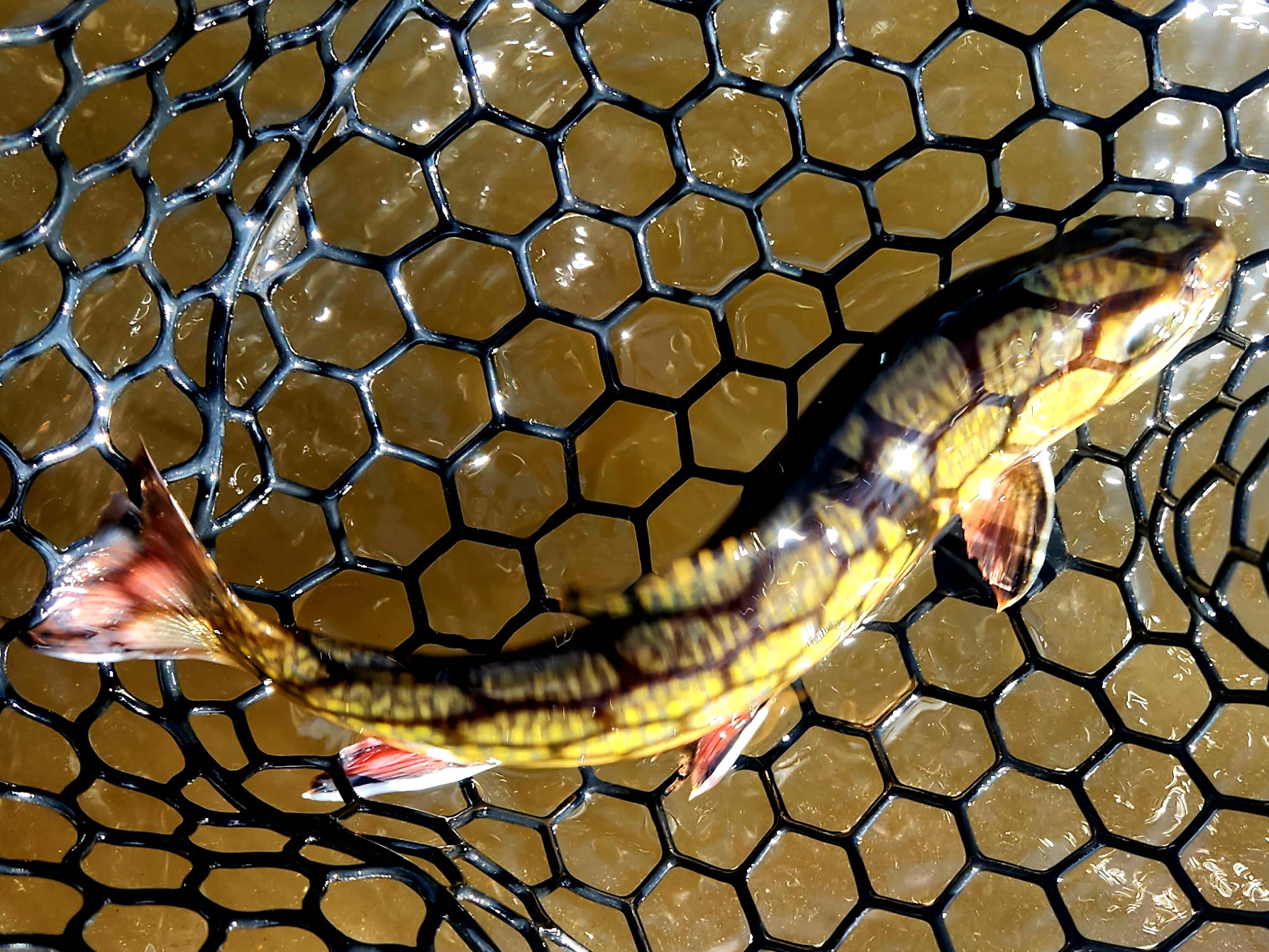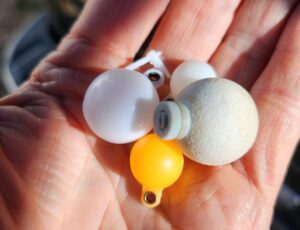When I present or talk about tenkara I often tell this story:
For years in my early days of fly fishing, I always fished dry flies. My fishing buddies called me the dry fly Queen. I had this magical effect – whenever I stepped into a river, a hatch would magically occur. It didn’t seem to matter where or when I was fishing, it just happened. I was so spoiled. But this meant, I never had to fish nymphs.
It was uncanny. I’m sure I don’t have a special power. I assume I just timed my fishing excursions to match hatches. And since I rarely fished nymph patterns I really got hooked on visual takes. It occurred to me, on that rare occasion I did cast a nymph, I was terrible. Even though I used an indicator, my hook sets were slow at best. I struggled with timing and noticed myself always looking for the fish. Even when I saw the indicator move, by the time I responded motorically, the instant was often lost. It takes time for that action to run up the length of the line and move the indicator. And because of the different water speeds throughout the water column, I missed the set.
After one such frustrating outing on deep-pool waters where nymphing was a must, I vowed to get better. Regardless of what was happening or hatching around me, for one season I would only nymph. And here’s the kicker, I would nymph naked – without the use of an indicator. I wanted my timing and reflexes to improve and thought this would be the best way to do it.
Since I needed to que in on sensitivity and tactile feedback, it seemed only fitting to start my nymphing study by using a tenkara rod. With the line directly attached to the end of the rod, minus guides and reel, an ultralight, hollow fly rod would help me recognize hits earlier and speed up my response time. Increasing the feedback would result in me at least attempting more hooksets, which essentially is the same as getting in more practice. Practicing something more, should make me better at it. This was my linear thinking
Guess what? It worked! I started out with a short line and a tight set up as in traditional tenkara. With little to no slack in the line and everything off the surface of the water I was able to achieve a clean and nature drift. I got action and lots of if.

When I started, I got excited from simply recognizing that I had a hit. Over the span of a few outings, I started to improve my hook set and while I was still missing a ton of fish, I did manage to hook and land a few. In time I got better. Much better and then began lengthening my line and setup.
To cut to the chase, I improved. Eventually I transitioned into a rod and reel set up to try to reproduce my achievements. This also worked. Although the feedback was more discrete and the sensitivity dampened, I now knew what I was looking for, or rather feeling for, and could respond quicker to those minute taps and ticks. My reflexes had sped up. My focus was no longer on the visual but on the tactile, and I swear, my “naked” drifts were way more productive.
There was definitely something to not using an indicator because I noticed, when I did use it, my numbers would often go down. I also noticed that when I used my tenkara rod to nymph, with it’s long length, my numbers often went up. And then I read this article and thought, “Hey, we’re thinking alike.” So I thought I’d re-post it here and encourage you to read it and while you do, think about tenkara. It makes sense.
4 Reasons to Ditch The Indicator
AND 2 REASONS TO USE ONE
By Allen Gardner of The Catch and The Hatch
I get asked a lot, “What is the deal with this Euro-nymphing, tightline, indicator-less fishing method I keep hearing about. Is it actually any better?” (and yes, I get it asked exactly like that.) Well today, I’ve decided to answer this question from my own perspective and experience, and the results are actually quite impressive…
1 – It Beats the Current
MATCH THE HATCH, MATCH THE CURRENT
2 – It Tightens Up Your Game
SHORTER CASTS = BETTER CASTS
There’s a reason 50ft casts are called hero casts, because it takes a hero to make them work. I don’t care if you’re the best angler in the world, you have a lower chance for a successful hookset and landing of a trout the further out you cast. It’s just science.
3 – Double Those Drifts
NOW THAT FLY WILL HUNT TWICE AS HARD
4 – You Can Adjust Your Depth With the Tip of Your Rod
NO MORE LINE KINKS OR BEGRUDGING INDICATOR ADJUSTMENTS
You can adjust your depth on every cast, or as needed. This is huge when you’re wade fishing from a deep hole to a shallow riffle. with an indicator, you have to adjust the rig every time you want to change depth in the river. With a tightline technique, you can simply raise or lower your rod the amount needed to change your depth. Makes it super easy to cover water as you wade of all different kinds (which in turn you’ll find fish in places you never thought and you’ll learn to stop walking over productive water)
And 2 Reasons to Keep the Indicator
While I’d say I tightline nymph about 80% of the time now, there are certainly some times you want to keep that strike indicator on. let’s go over those to make this a well-rounded guide.
YOU CAN’T REACH THE DRIFT YOU WANT
YOUR IN A DRIFT BOAT
Conclusion
So if you still aren’t convinced that ditching the incidator can improve your fly fishing game, then I challenge you to prove me wrong. Go and spend 2 hours on the water. 1 hour with your method and 1 tightlining and see which catches you more fish. I’ve done this test many times myself and I know how it turns out, which is why I tightline.
Try it out, you’ll be impressed with how easy it is to outfish your buddies and find productive water across the entire river and not just the holes.





My flyfishig passion started 52 years ago and learnt all my nymphing tactics without an indicator.Overs the years have them at but was never convinced that i was hooking enough fish so always went back to fishing the way i learnt by concentrating on where line enters water.
Yes! So much of what we learn or discover today is really “old school methods” – that worked really well and for good reason.
Just discovered this article and thanks for sharing it Karin. I dived deep into the euro nymphing/tight lining world over the past few months and it was quite instructional. Ironically, it led me right back to tenkara. I will gladly give up the ‘versatility’ of the reel for the simplicity and focus of my tenkara set ups.
Thanks for reading it Michael. Tenkara lends it self to so many positive fishing outcomes. I continue to hope that this will become more and more evident to fly anglers and the industry in time. Most roads lead back to Tenkara, lol.
Thank you for this guide, Karin! As a newbie, I appreciate the bounty of practical advice for tenkara fishing. Come next season, I will give nymphing a try in my local stream.
You’re very welcome. Reach out if we can ever help or offer advice. And welcome to the world oftenkara! Wishing tight line in the New Year.